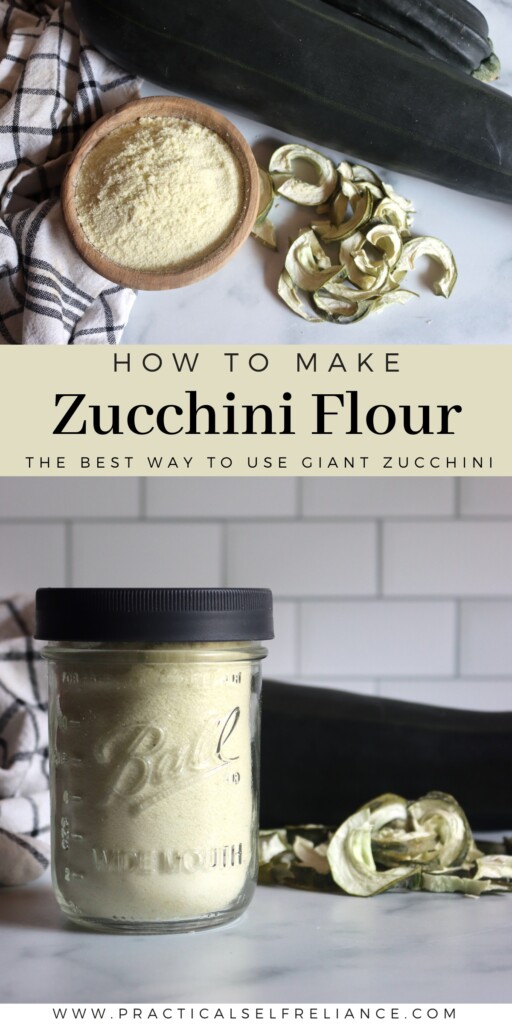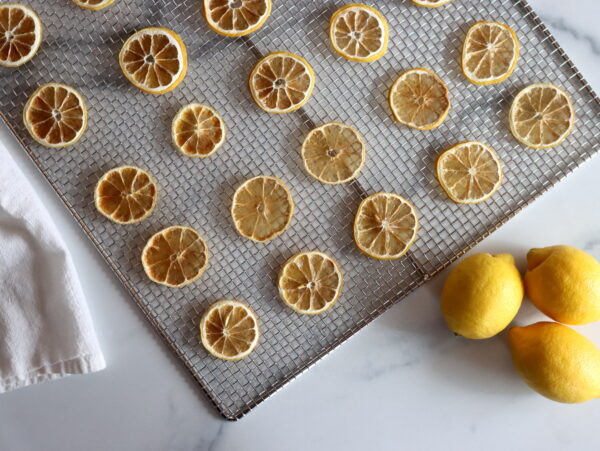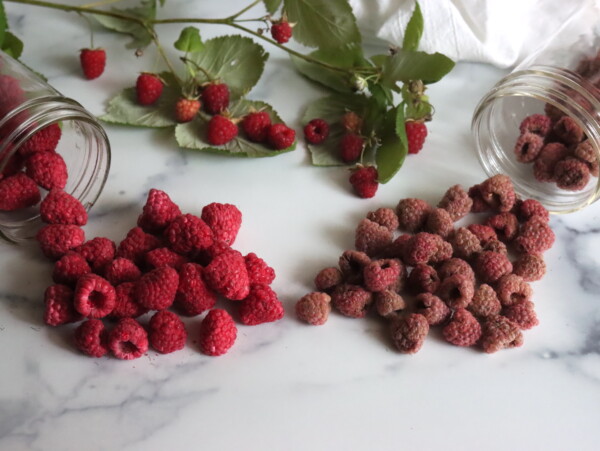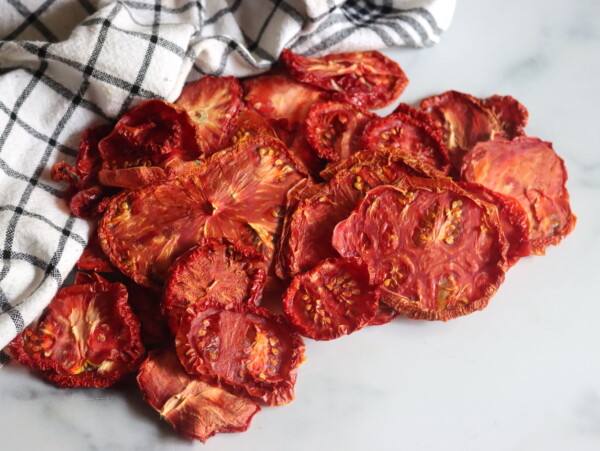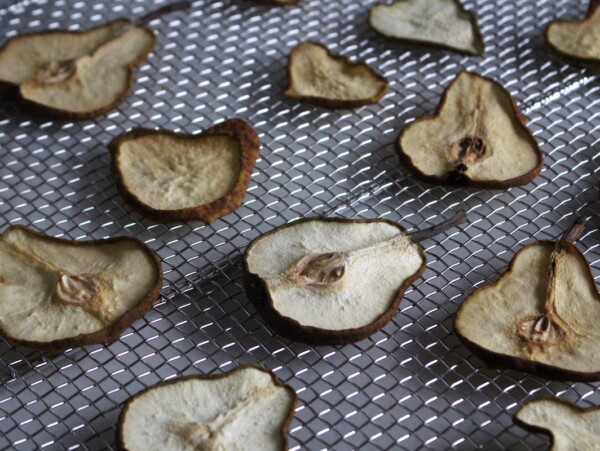Affiliate disclosure: This post may contain affiliate links. Please see our Privacy Policy.
Zucchini flour is a simple, old-fashioned way to turn an overabundance of summer squash into a long-lasting pantry staple. By drying and grinding zucchini into a fine powder, you can create a gluten-free flour that’s perfect for baking, cooking, or thickening soups and sauces. It’s an easy project that puts even the biggest garden zucchini to good use.
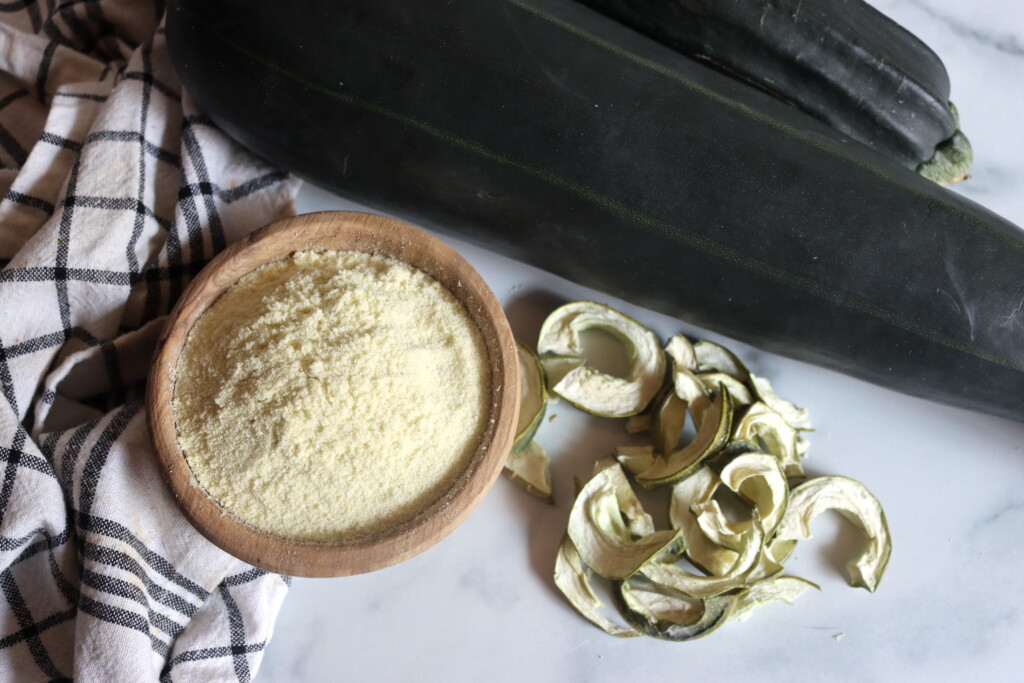
Zucchini flour is one of the best ways to preserve an overabundant summer harvest—especially if you’re dealing with those baseball bat-sized zucchini that seem to appear overnight.
It’s naturally gluten-free, low in carbs, and incredibly versatile in the kitchen. Whether you use a dehydrator, freeze dryer, or even the sun, turning zucchini into flour is an easy DIY project with long shelf life and lots of benefits.
Sometimes called Amish zucchini flour, this method has deep roots. Native American communities sun-dried squash for storage, and and if you really want to stay low tech, it can then be pounded into flour using a mortar and pestle.
During the rationing era of the 1940s, people used it to stretch wheat flour.
Today, it’s still common in Amish and Mennonite communities—and with a dehydrator and food processor, the process is a whole lot easier for modern homesteaders.
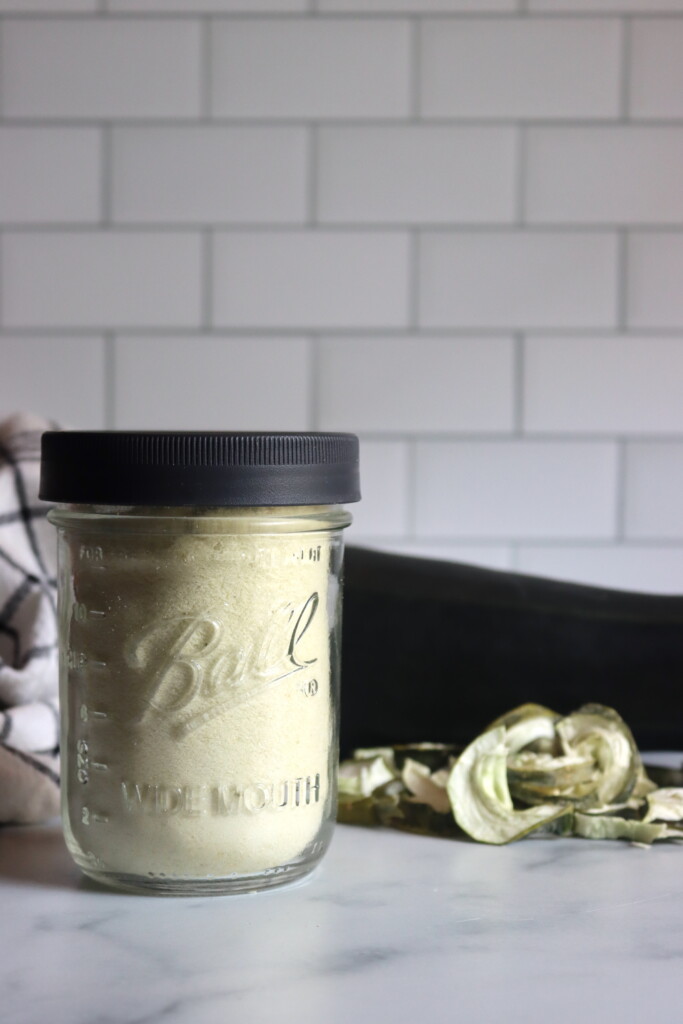
What Is Zucchini Flour?
Zucchini flour is simply dried zucchini ground into a fine powder. It’s allergy-friendly, shelf-stable, and a sneaky way to get more veggies into meals. You can make it from zucchini, yellow summer squash, spaghetti squash, or even some winter squash (though the sweeter ones behave differently in baking). I have a separate article on making pumpkin flour, which gives you a bit more guidance there.
Compared to other gluten-free flours like almond or coconut flour, it’s practically free if you grow your own zucchini—and a whole lot less fussy to make.
And, of course, it’s one of the very best ways to use those oversized zucchini!

Best Zucchini for Flour
Big, overgrown zucchini are perfect for flour. They tend to have a milder flavor than smaller, more tender ones, and the extra size means more yield.
The large seeds and tough skins don’t fully break down in the food processor, but they’re easy to sift out after grinding. That means you can skip peeling and seeding if you plan to sift the flour at the end. No need to waste time up front.
If you want a stronger zucchini flavor (say, for savory flatbreads), using small or medium fruit will give you a more pronounced taste.
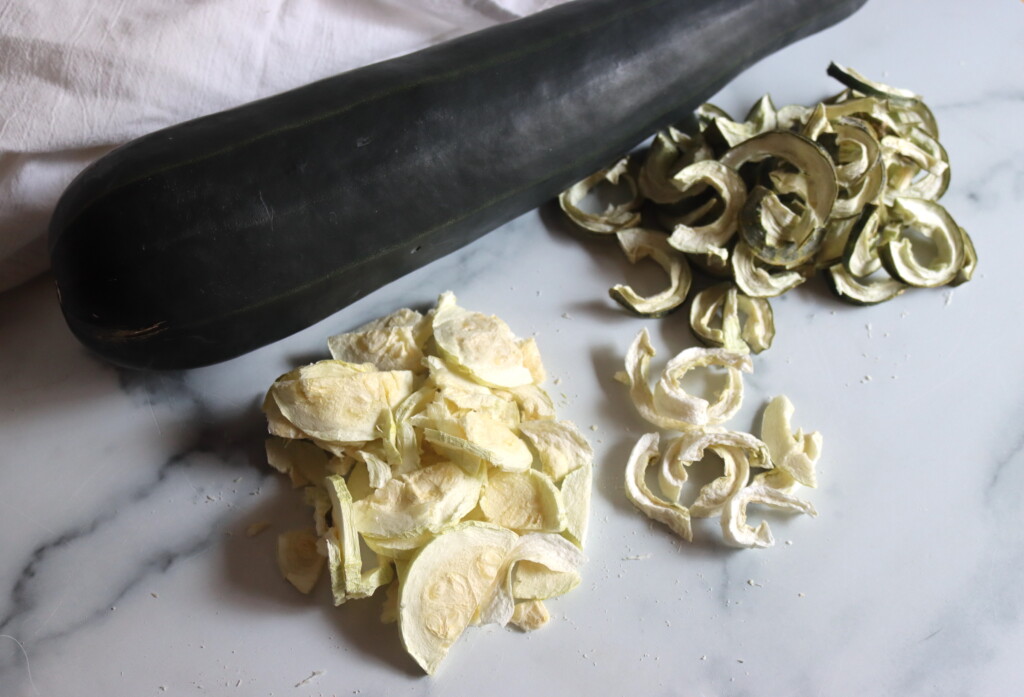
How to Make Zucchini Flour
Wash your zucchini and trim the ends. If they’re especially big, you can halve them lengthwise and scoop out the seeds. But again—peeling and seeding is optional if you’re going to sift after grinding.
Shred the zucchini using a box grater or food processor. Shredded zucchini dries faster than slices and crumbles more easily once dry, but slicing also works. For even faster drying, let the shreds sit in a colander for 15–20 minutes to drain off excess liquid, or gently squeeze them in a towel.
You’ve got a few options here, depending on your setup:
- Dehydrator: Spread shredded zucchini on dehydrator trays and dry at 125–135°F until fully crisp. This usually takes 8–12 hours, depending on humidity and thickness.
- Freeze Dryer: This gives a finer, fluffier end product with longer shelf life. Zucchini rehydrates more easily and makes a smoother flour.
- Oven Drying: Use your oven on the lowest setting, prop the door open a few inches, and place a fan nearby to improve airflow. Spread zucchini on parchment-lined baking sheets and dry for 2–5 hours, stirring occasionally.
- Sun Drying: If your climate is hot and dry, hang zucchini slices on a line or place shredded zucchini in a mesh screen in full sun. This traditional method takes several days and works best in low humidity.
Regardless of the method, make sure the zucchini is completely dry and brittle before grinding. Any moisture will cause spoilage or clumping in storage.
Transfer the dried zucchini to a food processor, high-speed blender, or use a mortar and pestle for a more hands-on experience. Grind until it reaches a fine, flour-like consistency. If you’re using a powerful blender, wait a few seconds before opening the lid to let the dust settle.
If you skipped peeling or seeding, you’ll likely have some bits of skin or seed that don’t fully break down. A quick sift through a fine mesh strainer takes care of that. The result? A smooth, light-colored flour with a fine texture that works well in baked goods.
If you’re using the flour for savory dishes, soups, or breading, there’s no harm in using it unsifted.

How to Use Zucchini Flour
Zucchini flour doesn’t contain gluten, so it behaves a bit differently than regular flour. Here are some basic guidelines:
- Substitute up to 1/3 cup of zucchini flour per 1 cup of all-purpose flour in most recipes.
- You can replace coconut flour 1:1 in recipes, since both absorb a lot of moisture.
- Avoid using it as a full replacement for almond flour—zucchini flour is lighter and less dense.
Zucchini flour works well in:
- Brownies and chocolate-based cakes (the cocoa helps mask the veggie flavor)
- Quick breads and muffins
- Crackers and flatbreads
- Thickening soups and sauces
- Breading fish, chicken, or veggies
It adds subtle moisture and mild flavor, with a nutritional boost that even picky eaters won’t notice.
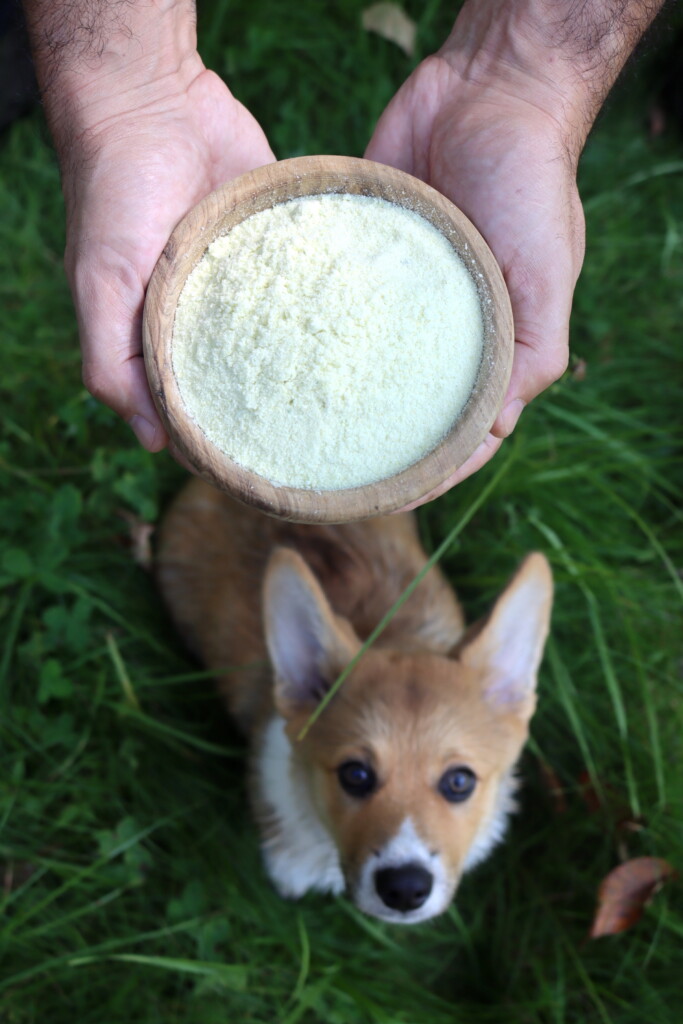
Storage Tips
Store zucchini flour in an airtight container like a mason jar. Add a silica packet to help absorb moisture and extend shelf life. Keep it in a cool, dark, and dry place (not the fridge, which is too humid).
Tightly sealed, most sources say zucchini flour can last 6–12 months (or longer, if kept sealed and dry).
(I actually just found a jar of it in the back of my pantry that’s 18 months old and it’s perfectly fine, so maybe you can stretch it a bit longer if you keep it well sealed and dry it well to start.)
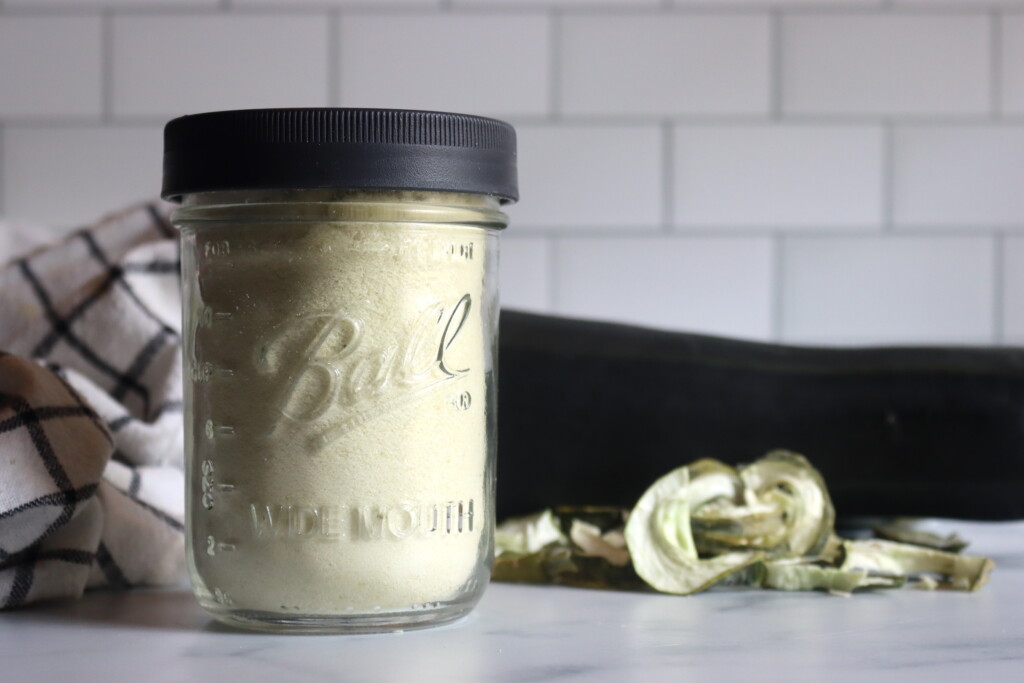
How Much Flour Does Zucchini Yield?
Zucchini is about 90–95% water by weight, so it shrinks a lot when dried. It’ll weigh almost nothing, but it does still take up space. On average:
- 2 cups of shredded zucchini = less than ½ cup flour
It’s not high-yield per se, but zucchini flour is incredibly lightweight and potent. A little goes a long way, especially in baked goods where it’s used in small amounts.
If you want to fill a pint jar, as I have here, you’ll need about 3-4 extra large zucchini.
Absolutely! You can use yellow summer squash, spaghetti squash, or even cooked and mashed winter squash like butternut. Just note that sweeter squashes will change the flavor and moisture level in baked goods.
One large zucchini (about 12–14 inches long) yields roughly 2 to 2½ cups of shredded zucchini, which dries down to less than ½ cup of flour. To make a full pint of flour, you’ll need about 4 large zucchini or 8 to 10 cups of shredded zucchini.
Peeling and seeding is completely optional. The peels and seeds don’t fully grind into flour, but they’re easy to sift out after processing. If you’re short on time, skip the extra prep and plan to sift at the end.
Yes, you can use an oven set to its lowest temperature with the door propped open to allow moisture to escape. Drying zucchini this way takes about 2 to 5 hours, depending on humidity and thickness.
Store zucchini flour in a cool, dry place in an airtight container. Add a silica gel packet to absorb moisture. For long-term storage, you can vacuum seal it or freeze it—just be aware that powders may clog vacuum sealer hoses unless stored in a bag within a jar.
Yes! In fact, storing dried zucchini shreds instead of flour may extend shelf life. When you’re ready to use it, just grind what you need into flour. When not ground, it’ll take up more space to store, but it’s easier to store it in a variety of containers such as Ziploc bags (flour really needs something like a jar).
Zucchini flour works well in quick breads, muffins, brownies, crackers, and even as a thickener for soups and sauces. It’s best used to replace up to 1/3 of the flour in a recipe or 1:1 in place of coconut flour.
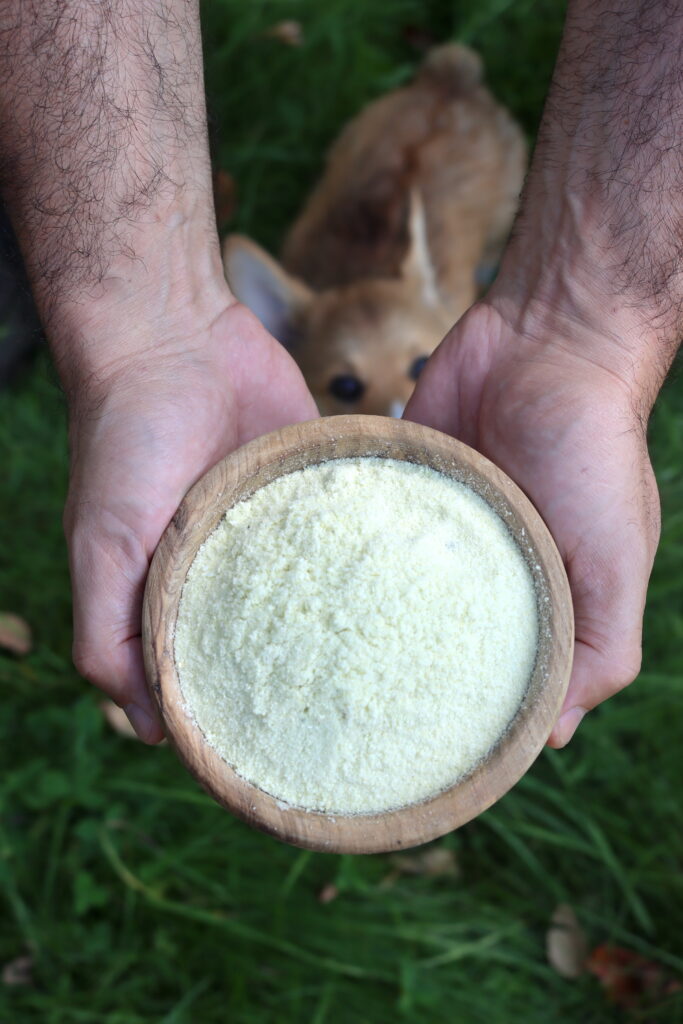
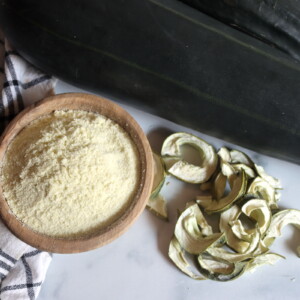
Zucchini Flour
Equipment
- Dehydrator
Ingredients
- 10 cups zucchini, shredded or sliced, roughly 4 large zucchini
Instructions
- Wash and trim the ends from your zucchini. Peeling and seeding are optional—if you plan to sift the flour after grinding, there’s no need to remove them.
- Shred the zucchini using a food processor or box grater. Alternately, you can just simply slice the zucchini into ¼ inch slices. Let it drain in a colander for 15–20 minutes or squeeze gently in a clean towel to remove excess moisture.
- Dry the zucchini using one of the following methods:Dehydrator: Spread on mesh trays and dry at 125–135°F for 8–12 hours until brittle.Oven: Spread on lined baking sheets, set oven to its lowest temp, prop the door open, and dry for 2–5 hours, flipping or stirring occasionally.Freeze Dryer: Use according to manufacturer’s instructions for best texture and longest shelf life. Expect a 24 to 26 hour dry time.
- Grind the dried zucchini in a high-speed blender, food processor, or mortar and pestle until it forms a fine powder.
- Sift (optional) to remove unground bits of peel or seed for a smooth, even flour.
- Store in a clean, dry pint jar with a tight lid. If fully dried and kept well sealed, it’ll keep many months. Add a silica gel packet for best long-term storage.
Notes
Flour Substitution Tips:
- Use up to 1/3 cup of zucchini flour per cup of all-purpose flour in baking recipes.
- Can be used 1:1 in place of coconut flour.
- Best in cocoa-based or spiced baked goods, or for savory uses like thickening soups or breading meat.
Nutrition
Nutrition information is automatically calculated, so should only be used as an approximation.
